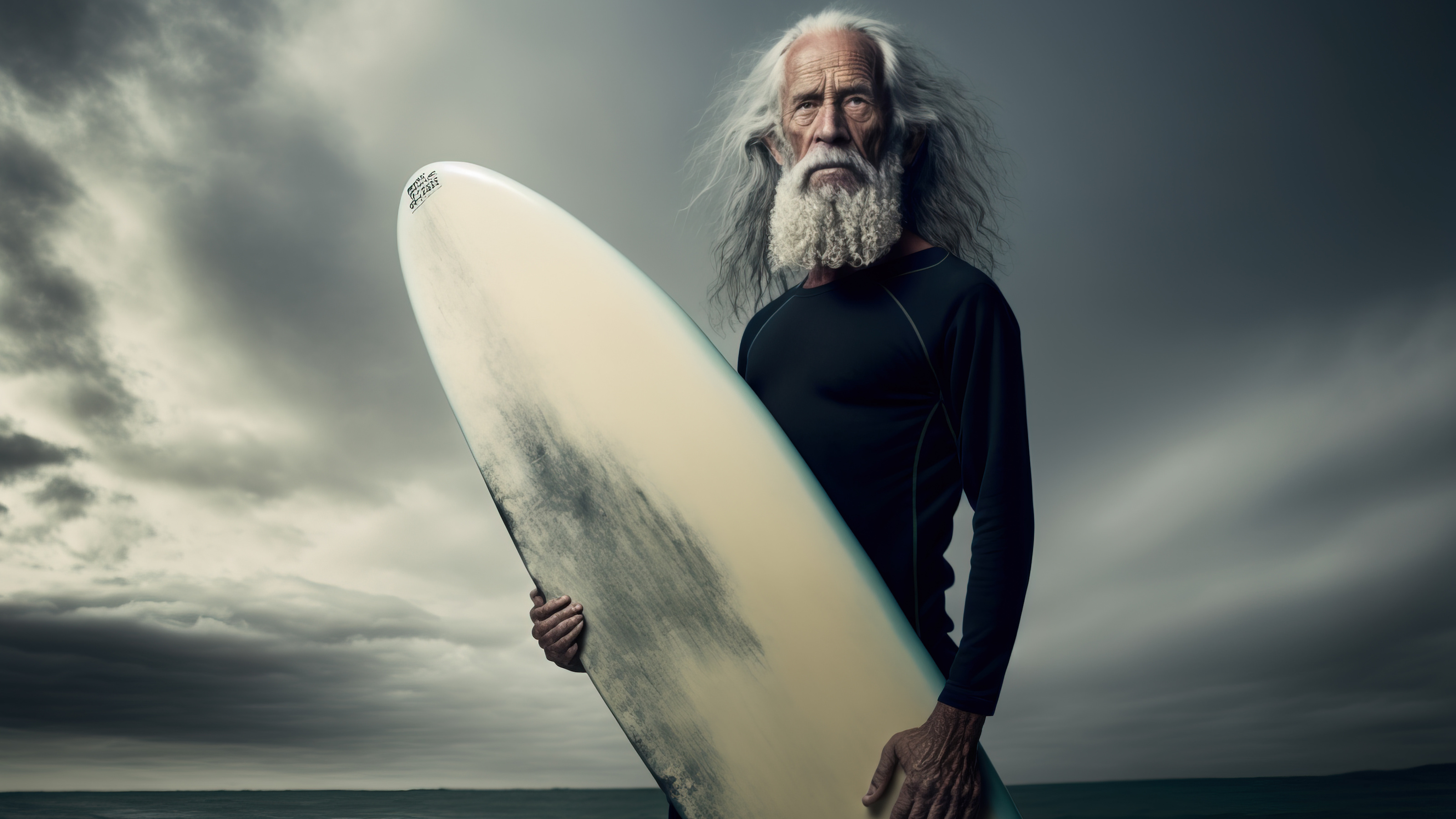To be a top performer, you need to rest at your best

- Recovery includes any activity that provides pleasure and peace while not activating your stress response.
- Sleep is one of the best recovery tools available to anyone, but unfortunately, it can be challenging for some.
- Other recovery activities used by top performers include exercise, float tanks, nature walks, and even expressing gratitude.
A critical component of being an excellent performer is to provide yourself the time and space to recover from performing. Performing gets your stress response revved up; recovery provides a chance to cool down. Build recovery into your day, schedule it in your calendar if need be.
Ex-SEAL Pete Naschak notes that he was often better at recovery when he was deployed, because he was more deliberate about making time for it. “I was more focused on that time off when I was in Iraq,” he says. “Everything was focused, centered, and important, and there weren’t any distractions.” Recovery is more challenging in Pete’s civilian life, where there is more stuff going on around the house, work, and life in general. He emphasizes the importance of putting the effort into recovery. “When you have time off, is it really off?”
Recovery can be anything that gives you pleasure and peace while not activating your stress response: taking the kids for ice cream, cooking a meal with a partner, walking the dog, strolling through a park or the woods. These are all things that fit the bill, activities where there’s no pressure, judgment, competition, or anxiety.
Many people I work with, such as NBA coach Erik Spoelstra, are avid exercise buffs. “Everyone knows they need to give me that time [to work out], especially after a tough game,” he says. “When I first started doing it, my staff kept interrupting me. I had to have a staff meeting to tell them to leave me alone during that time. I’m doing this so I can be better for you.”
The best recovery tool is one we all have at our disposal: sleep. Unfortunately, while sleep comes easily for some people, it is more challenging for others. For those folks I like to recommend tart cherry juice, as in the juice from tart cherries, which are a different version of the fruit than the sweet cherries found in grocery stores. Tart cherries are bright red, as opposed to their deeper-hued, sweeter, ice-cream-making cousins, and are smaller and more sour. They are a good source of anthocyanins, which give them their pigmentation and are associated with anti-inflammatory and antioxidant benefits, as well as melatonin, a hormone that helps regulate sleep.
Which helps explain the myriad of health benefits derived from them: reduced inflammation, muscle recovery, and (ta-da!) the duration and quality of sleep. This is why many Navy SEALs drink a few ounces of tart cherry juice before bed, as do many professional sports teams.
If tart cherry juice is the sleep good guy, then its bad-guy nemesis is the smartphone, tablet, computer, or TV screen. The brain has something called the pineal gland, which takes its cues from light. Back before humans figured out how to create light, the setting of the sun activated the pineal gland, flooding the body with melatonin, a hormone associated with our natural circadian rhythm. It helps transition the body into sleep mode.
Man-made light delays this process, but it is the “blue light” that emits from phones and these other screens that is the most egregious culprit. This light possesses a shorter wavelength and higher energy than other colors, which is great for boosting alertness and attention but a detriment when sleep is the objective.
If you are on your phone or laptop in the evening, you are essentially telling your brain that it is not time to sleep. For many people, it is folly to shut off the phone or TV, turn off the light, and expect sleep to come quickly. This isn’t the way the body works. Try to give yourself at least an hour of screen-free time before turning out the lights, or at least turn your screen to night mode, which reduces blue light.
Many elite performers I’ve worked with use sensory deprivation tanks (aka float tanks) to recover. A float tank is an enclosed tank filled with a shallow pool of warm water that is saturated with salt, enabling people to effortlessly keep their eyes, nose, and mouth comfortably above the surface. The treatment is formally known as Floatation-REST (Reduced Environmental Stimulation Therapy).

Float tanks were invented in the 1950s by researchers trying to understand how the brain responds to an environment completely lacking sensory input. They discovered that rather than falling asleep, people in such an environment stay fully awake and aware. This was an interesting outcome, but also somewhat of a problem, given that the original tanks were vertical and required participants to wear a cumbersome helmet so they could breathe. As a result, the float tank market was limited to only highly motivated individuals, such as NASA astronauts. Fortunately, the tanks have gone horizontal and gotten more spacious, and there are now hundreds of centers across the country.
Very few humans get to experience pure sensory deprivation. There’s always something tickling the five senses. Even in utero, the fetus experiences sounds and physical movement. So depriving a person of all of that sensory input, which is what happens in a float tank, is an intense experience. What if I were to deprive you of all food and drink (except water) for a week? By the end of that time, you’d be hungry and uncomfortable (and angry at me!), but otherwise okay. If I were to then hand you an apple, you’d bite into it and immediately experience the most delicious apple you’ve ever eaten. Deprived of all food for a week, your taste buds would be hypersensitive to anything.
Float tanks achieve the same effect, but for the brain. Coming out of the float, where it is deprived of all sensory input for a period of time, the brain (and mind) is like those taste buds missing food for a week. It is hypersensitive to any input, creating an enhanced ability to think and focus. I’ve seen this work with many people, including Navy SEALs and Los Angeles Dodgers (both organizations use float tanks regularly). They have markedly improved focus for a few days after float sessions. SEALs shoot better, ballplayers see the ball better, executives see new solutions to old problems. (Total sensory deprivation can be intimidating. Most tanks offer the option of dim light and/or soft sounds to help newbies ease into the experience.)
Nature walks are another extremely beneficial way to recover. Most of us live in urban or suburban environments and spend the bulk of our waking hours indoors, so we are far removed from nature most of the time. A growing body of research draws a link between this separation and increased levels of mental illness. The more we are removed from nature, the more depressed and anxious we become. Conversely, returning to nature for even a short period of time — one to two hours — can have remarkable restorative effects.
Numerous studies have confirmed this finding. A 2007 study showed that immersing oneself in nature has a stronger restorative effect than watching a nature video or working out. A 2015 paper concludes that a ninety-minute walk in nature leads to a decrease in rumination, the usually harmful process of focusing on emotional causes and consequences, and decreased activity in a part of the brain (the subgenual prefrontal cortex) associated with sadness. Nature walking improves the mood, calms racing thoughts, and reduces sadness. This isn’t just some faddish guru suggestion; it’s physiology at work.

Walking in nature is easy. You don’t need to transport yourself deep into a national park or forest. In fact, you don’t even need a forest; a local park or garden will do just fine. It does, though, require a bit of concentration. Put away the phone and resist the urge to pop in earbuds. Let all five senses attune themselves to the nature around them. Notice the sounds of the birds, see the plants and trees, feel the air on your face and the dirt underfoot. In a way, forest bathing is the opposite activity of float tanks, since it fully activates all five senses rather than shutting them down. The beneficial effects, though, are similar: renewed energy and increased focus.
Other recovery techniques I have seen work very well include yoga and meditation. Then there’s Mike Dowdy’s approach. The champion wakeboarder uses float tank sessions, sleep, and checking in with people he loves as recovery techniques, but he also advocates doing things he sucks at.
“There’s a new sport: wake foiling,” Mike says. “The way you ride is very different; it’s like flying a wing. I’m terrible at it! It’s hard as shit! So I just leave the baggage at the door and be open-minded about it. I don’t think about it or try too hard, just have fun.”
Trying something new like this gives Mike the chance to do something active while forgetting about the stresses of training and competition. He might not be giving his body a rest, but he’s certainly giving his mind one.
Nathan Chen’s guitar serves the same purpose. “In figure skating I’m trying to achieve a version of excellence. When I do other things, like playing guitar, I’m not trying at all to be excellent. I can still work on getting better, but I don’t get frustrated. I don’t have the need to be the best guitarist.” (I tried to reach Eric Clapton to see how figure skating helps him recover from being the world’s best guitarist, but he hasn’t gotten back to me yet.)
Recovery can be anything that gives you pleasure and peace while not activating your stress response.
Eric Potterat and Alan Eagle
Finally, there’s Erick Spoelstra’s technique for helping his team recover from a tough stretch: gratitude. Practicing gratitude has all sorts of beneficial effects, including, according to one 2020 study, reduced depression, anxiety, and moderated stress response, so Eric is following the science.
“They come into the locker room [after a game or practice] and everyone is expecting us to beat them up. Instead, sometimes I’ll get everyone to sit in a circle and ask them, what are you grateful about outside of this game? Or I’ll ask them, how did you get here? Some of the best team meetings I’ve ever had are when guys just tell their story. I give them an exercise: when you leave here, contact two to three people that have really helped you. Then a week later, I’ll ask them who those people were.”
Erik’s approach boosts balance as well as recovery. The exercise reminds players of who they are outside of basketball and how much they have accomplished just to be there in the room, while giving them the space to recharge.





